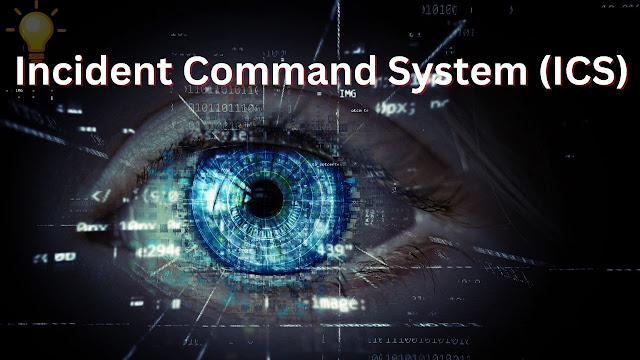ICS The Incident Command System (ICS) requires all incident commanders to fill out Form 201, often known as the Incident Briefing Form. During incidents, this standardized, on-scene, all-hazards incident management strategy enables agencies and individuals from many sectors to collaborate in a smooth manner. In order to have a knowledge of the significance of this document, it is vital to explore the primary functions that the ICS Form 201 serves, as well as its components and the method in which it permits the seamless flow of essential information.
General Information Regarding the Incident Command System (ICS)
The Incident Command System (ICS) was developed specifically to meet the many complexity and difficulties that may surface during times of emergency. It provides a framework that is adaptable, which enables effective management of situations of varying degrees of severity.
Importance of the ICS Form 201 The ICS Form 201 provides the event Command and the General Staff with vital information on the event situation and the resources that have been assigned to it. Regardless of whether individuals arrive or depart the incident site, this form guarantees that all members of the team are on the same page with the current situation.
Constituents of the ICS Form 201
The shape is broken up into numerous different portions, each of which has a particular function:
Information Regarding the event This part includes fundamental information, such as the name of the event, the date, and the time.
The Current Situation:
This section provides a description of the current situation, along with its goals and planned activities.
A summary of the resources that have been allocated to the event, including both main and secondary resources.
The term "weather forecast" refers to information that outlines the anticipated weather conditions.
Contains any safety issues and directives for the staff. Also known as the Safety Message or Safety Plan.
You are free to contribute any additional information or comments in this section, as well as any general observations you may have.
The Importance of ICS Form 201 in Providing Response Coordination
The consistent format of the ICS Form 201 guarantees that an incident summary is presented in a manner that is both clear and succinct. It not only conveys the present state of affairs but also contributes to the process of formulating a plan for the next step. The incident command makes sure that everyone, from top-level management to field staff, has an accurate and up-to-date grasp of the situation by continuously updating this form. Everyone will be on the same page as a result of this action.
Key Takeaways for Professionals in the Field of Incident Management
ICS Form 201 is not just a piece of paper that you fill out. It is an essential piece of equipment for efficient incident management:
Encourages Transparency: All parties concerned are provided with a clear picture of what is taking place.
Improves Coordination: This helps to guarantee that there are no disputes over resources or duplications of activities.
Enhances Productivity: Teams are able to prioritize their work based on data that is available in real time.
Streamlines the Decision-Making Process Leaders are able to make speedy judgments based on accurate information.
The Development of ICS Form 201 Throughout the Course of Contemporary Incident Management
The demand for enhanced processes and systems is always growing as a direct result of the increasing complexity and scope of both everyday occurrences and unexpected crises. Despite its fundamental role, the ICS Form 201 has undergone many iterations throughout the years. The ever-changing landscape of incident management and response is shown by the development of this system.
The Combination of Technology and ICS Form 201
In this era of digitization, manually filling out paper forms has its drawbacks. In light of this realization, a significant number of companies have shifted their reliance for incident management requirements to digital platforms. The electronic form of ICS Form 201 is as follows:
Updates Can Be Made in Real Time Digital forms can be updated in real time, which enables fast distribution of information across teams.
Increases Accessibility: Thanks to cloud-based platforms, the form can be accessible from any device and location, which guarantees that there will be no lag in communication.
Improves Insights Obtained From Analyzing Data Digital versions are simpler to connect with data analysis tools, which results in improved understanding of patterns and assistance in the prevention of future incidents.
Personalization of the Experience and Scalability of the Form
There has been no change made to the fundamental components of the ICS Form 201; however, more contemporary incident management procedures permit modification. The parts may be modified by organizations so that they better fit the requirements and difficulties that are specific to them.
Instructional Methods and the ICS Form 201
Even the most sophisticated machinery is only functional if it is operated by trained professionals. Therefore, extensive training is very necessary. At the moment, corporations are increasing the amount of money that they put in:
Simulation Drills include often acting out simulated situations in order to get experience in completing and using the ICS Form 201.
Continuous Education: Ensuring that all staff are kept up to speed with the modifications made to the form and are aware of the ramifications of those changes when the form is revised.
input Loops: After-action reviews and debriefings after events give vital input, which helps in improving the use of ICS Form 201 in future circumstances.
The Prospects for the ICS Form 201
Because of developments in technology and the unpredictable nature of occurrences, the ICS Form 201 will almost certainly go through more revisions in the near future. The use of predictive analytics, the incorporation of artificial intelligence to give real-time decision support, and augmented reality to enable on-ground data visualization are some of the potential enhancements that might be implemented in the very near future.





.jpg)
0 Comments